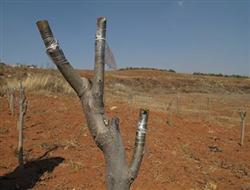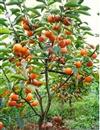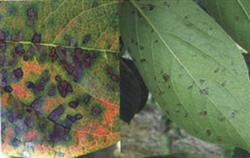Grafting technique of Sweet Persimmon

Sweet persimmon has attracted the attention of more and more fruit farmers and fruit merchants because of its complete de-astringency on the tree, easy to eat, simple management, strong stress resistance and so on. In order to make sweet persimmon planting large-scale, industrialization and marketization, the grafting techniques of sweet persimmon seedling breeding are introduced to the readers. Sweet persimmon is grafted with wood buds. This method has the advantages of wide adaptability, long grafting time, high speed, high survival rate and saving scion, so it is one of the most ideal grafting methods. The whole year of grafting of sweet persimmon can be divided into three stages: spring, summer and autumn: spring: it is in the period from seedling sprouting to leaf expansion, which is the period of the longest grafting time and the largest amount of grafting in the whole year, and the scion in this period is the use of branches cut in winter. Beware of water loss during the storage period. Grafting must be carried out in this period when the sap begins to flow, and the seedling buds are about to or just sprouted, not early. Summer: scion is the use of new twigs that occurred in the spring of the year. It is required to cut the leaves of the scion in time, put it in a wet place, pick it as you go, and take it whenever you use it. In this period, it is high temperature and rainy, leading to the non-Lignification of branches, low utilization rate and great waste; the lag is faced with high temperature and rain, and the tannin substance is active and intense. if the grafting technology is not skilled and the speed is slow, it is easy to produce diaphragm on the wound surface and affect healing, resulting in grafting failure. After the completion of the above two stages, we should timely check the survival, cut the anvil, make up for those who are not alive, provide enough water and fertilizer, and strive to get the seedlings out of the nursery in the same year. Autumn: the base of the seedling has grown thick, the branches have matured, and the grafting should be finished before the seedling stops growing, and the rootstock cannot be cut after grafting. The specific time of the whole grafting process is carried out flexibly with reference to local nature, climate (phenology) and other factors. The whole grafting process requires that the grafting site be selected at a smooth place (0-15 cm) away from the ground, not too high, and the orientation should be on the windward side. The thickness of root rootstock and scion are basically the same, and the cutting planes of both sides of grafting are flat, straight, smooth, and basically equal in size, up and down, left and right, and the same size. After the end of grafting, strive to show white up and down, do not pedal into the air, and leave no seam in the middle. The bundled plastic has the advantages of narrow bandwidth, good elasticity, strong flexibility, no germs and pollution, and should be strict, dense, tight and fast. The grafting blade is thin, flat, neat and sharp, the steel is tough, and the grafting personnel are skilled, flexible and fast.
- Prev

High-quality and High-yield cultivation techniques of Sweet Persimmon
The establishment and planting of the garden. Sweet persimmon is not strict on soil, but the sandy soil with PH value of 5.57.5 is the best. The annual average temperature is above 13 ℃. Most varieties of sweet persimmon only have female flowers, but they can bear fruit unisexually. If pollinated varieties are planted, it is more beneficial to production. The main varieties should be marketable, with large fruit shape, beautiful appearance and pulp.
- Next

Postharvest Management Technology of Sweet Persimmon
Anthracnose is a major disease of persimmon, which mainly harms fruits, shoots and seedlings. Resulting in a large number of fruit drop, branches withered. When the disease is serious, the fruit drop can reach 20%, 40%, seriously affecting the yield and quality of persimmon. The prevention and control methods are as follows. First, water and fertilizer management to strengthen water and fertilizer management, enhance tree potential, improve disease resistance.
Related
- Moge, come on! The staff of the peasant association in the producing area of cantaloupe were frightened when the crowd gathered.
- Causes and Solutions of low Fruit setting rate of Apple
- Symptoms and control measures of passion fruit virus disease
- Fruit growing lesson: how do apple orchards keep high yields?
- Can you build orchards in the mountains? What are the pros and cons?
- How to manage the coloring period of Crisson grape?
- This paper introduces the processing technology of two kinds of fig products.
- How much is a month for retired teachers in rural areas by 2020?
- How can strawberry planting increase sugar content? We should pay attention to management in many aspects.
- What are the cultivation techniques on how to improve the yield of golden fruit?

